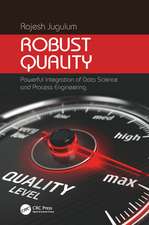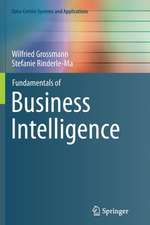Data Mining Techniques in Sensor Networks: Summarization, Interpolation and Surveillance: SpringerBriefs in Computer Science
Autor Annalisa Appice, Anna Ciampi, Fabio Fumarola, Donato Malerbaen Limba Engleză Paperback – 27 sep 2013
Din seria SpringerBriefs in Computer Science
-
 Preț: 475.83 lei
Preț: 475.83 lei - 20%
 Preț: 166.97 lei
Preț: 166.97 lei - 20%
 Preț: 325.63 lei
Preț: 325.63 lei - 20%
 Preț: 349.15 lei
Preț: 349.15 lei - 20%
 Preț: 302.49 lei
Preț: 302.49 lei -
 Preț: 381.81 lei
Preț: 381.81 lei -
 Preț: 446.47 lei
Preț: 446.47 lei - 20%
 Preț: 296.17 lei
Preț: 296.17 lei - 20%
 Preț: 335.66 lei
Preț: 335.66 lei - 20%
 Preț: 463.83 lei
Preț: 463.83 lei - 20%
 Preț: 323.00 lei
Preț: 323.00 lei - 20%
 Preț: 322.35 lei
Preț: 322.35 lei - 20%
 Preț: 321.85 lei
Preț: 321.85 lei - 20%
 Preț: 232.68 lei
Preț: 232.68 lei -
 Preț: 375.45 lei
Preț: 375.45 lei - 20%
 Preț: 323.00 lei
Preț: 323.00 lei - 20%
 Preț: 322.81 lei
Preț: 322.81 lei - 20%
 Preț: 324.17 lei
Preț: 324.17 lei - 20%
 Preț: 323.00 lei
Preț: 323.00 lei - 20%
 Preț: 322.17 lei
Preț: 322.17 lei - 20%
 Preț: 322.50 lei
Preț: 322.50 lei - 20%
 Preț: 323.34 lei
Preț: 323.34 lei - 20%
 Preț: 324.17 lei
Preț: 324.17 lei - 20%
 Preț: 323.46 lei
Preț: 323.46 lei - 20%
 Preț: 322.17 lei
Preț: 322.17 lei - 20%
 Preț: 322.02 lei
Preț: 322.02 lei -
 Preț: 341.50 lei
Preț: 341.50 lei - 20%
 Preț: 324.49 lei
Preț: 324.49 lei -
 Preț: 344.47 lei
Preț: 344.47 lei -
 Preț: 376.80 lei
Preț: 376.80 lei -
 Preț: 377.18 lei
Preț: 377.18 lei - 20%
 Preț: 324.17 lei
Preț: 324.17 lei - 20%
 Preț: 352.26 lei
Preț: 352.26 lei - 20%
 Preț: 321.32 lei
Preț: 321.32 lei - 20%
 Preț: 322.17 lei
Preț: 322.17 lei - 20%
 Preț: 324.17 lei
Preț: 324.17 lei - 20%
 Preț: 322.02 lei
Preț: 322.02 lei -
 Preț: 374.46 lei
Preț: 374.46 lei - 20%
 Preț: 320.21 lei
Preț: 320.21 lei - 20%
 Preț: 323.34 lei
Preț: 323.34 lei - 20%
 Preț: 324.17 lei
Preț: 324.17 lei - 20%
 Preț: 231.84 lei
Preț: 231.84 lei - 20%
 Preț: 294.97 lei
Preț: 294.97 lei - 20%
 Preț: 322.50 lei
Preț: 322.50 lei - 20%
 Preț: 323.46 lei
Preț: 323.46 lei -
 Preț: 374.08 lei
Preț: 374.08 lei -
 Preț: 408.23 lei
Preț: 408.23 lei - 20%
 Preț: 321.52 lei
Preț: 321.52 lei - 20%
 Preț: 323.34 lei
Preț: 323.34 lei - 20%
 Preț: 323.00 lei
Preț: 323.00 lei
Preț: 323.80 lei
Preț vechi: 404.74 lei
-20% Nou
Puncte Express: 486
Preț estimativ în valută:
61.97€ • 64.46$ • 51.16£
61.97€ • 64.46$ • 51.16£
Carte tipărită la comandă
Livrare economică 15-29 aprilie
Preluare comenzi: 021 569.72.76
Specificații
ISBN-13: 9781447154532
ISBN-10: 1447154533
Pagini: 120
Ilustrații: XIII, 105 p. 39 illus., 37 illus. in color.
Dimensiuni: 155 x 235 x 10 mm
Greutate: 0.18 kg
Ediția:2014
Editura: SPRINGER LONDON
Colecția Springer
Seria SpringerBriefs in Computer Science
Locul publicării:London, United Kingdom
ISBN-10: 1447154533
Pagini: 120
Ilustrații: XIII, 105 p. 39 illus., 37 illus. in color.
Dimensiuni: 155 x 235 x 10 mm
Greutate: 0.18 kg
Ediția:2014
Editura: SPRINGER LONDON
Colecția Springer
Seria SpringerBriefs in Computer Science
Locul publicării:London, United Kingdom
Public țintă
ResearchCuprins
Introduction.- Sensor Networks and Data Streams: Basics.- Geodata Stream Summarization.- Missing Sensor Data Interpolation.- Sensor Data Surveillance.- Sensor Data Analysis Applications.
Textul de pe ultima copertă
Emerging real life applications, such as environmental compliance, ecological studies and meteorology, are characterized by real-time data acquisition through a number of (wireless) remote sensors. Operatively, remote sensors are installed across a spatially distributed network; they gather information along a number of attribute dimensions and periodically feed a central server with the measured data. The server is required to monitor these data, issue possible alarms or compute fast aggregates. As data analysis requests, which are submitted to a server, may concern both present and past data, the server is forced to store the entire stream. But, in the case of massive streams (large networks and/or frequent transmissions), the limited storage capacity of a server may impose to reduce the amount of data stored on the disk. One solution to address the storage limits is to compute summaries of the data as they arrive and use these summaries to interpolate the real data which are discarded instead. On any future demands of further analysis of the discarded data, the server pieces together the data from the summaries stored in database and processes them according to the requests.
This work introduces the multiple possibilities and facets of a recently defined spatio-temporal pattern, called trend cluster, and its applications to summarize, interpolate and identify anomalies in a sensor network. As an example application, the authors illustrate the application of trend cluster discovery to monitor the efficiency of photovoltaic power plants. The work closes with remarks on new possibilities for surveillance gained by recent developments of sensing technology, and with an outline of future challenges.
This work introduces the multiple possibilities and facets of a recently defined spatio-temporal pattern, called trend cluster, and its applications to summarize, interpolate and identify anomalies in a sensor network. As an example application, the authors illustrate the application of trend cluster discovery to monitor the efficiency of photovoltaic power plants. The work closes with remarks on new possibilities for surveillance gained by recent developments of sensing technology, and with an outline of future challenges.
Caracteristici
Introduces the trend cluster, a recently defined spatio-temporal pattern, and its use in summarizing, interpolating and identifying anomalies in sensor networks Illustrates the application of trend cluster discovery to monitor the efficiency of photovoltaic power plants Discusses new possibilities for surveillance enabled by recent developments in sensing technology




























